Signs that you may have a termite infestation
If you own a home or property its important to be aware of the signs of a potential termite infestation. Termites are silent but destructive pests that cause significant damage to homes if left unchecked.
However, many termite infestations are treatable, and with the help of a professional pest control company, you can protect your home from damage.
One of the most common, subtle signs of termites is what appears to be salt and pepper at doorways and window sills. This “salt and pepper” is actually termite droppings, which appear as small, black grains. The droppings are also sometimes described as coffee grounds or sand. As termites consume wood, they excrete a sawdust-like material that can be mistaken for salt and pepper. If you notice it around your home, have your home inspected to determine if you have termites.
Another sign of termite infestation is wings on window sills or by baseboards. Termites, like many other insects, have wings during a certain stage of their life cycle. Thier wings fall off after the termites have found a suitable location to establish a colony. If you notice wings on your window sills or baseboards, it’s a sign that the termites are reproducing and establishing a colony.
If you notice other signs of termites around your home, such as mud tubes on walls, damaged wood, or a musty smell, it’s important to contact a professional. Termites will cause damage to your home, and the longer they go unnoticed, the worse the damage will be.
Treatment by a professional pest control company is the best way to prevent termites. At Killroy Pest Control, we have the knowledge, equipment, and experience necessary to identify the type of termites present in your home, and to safely and effectively eliminate them.
Make sure your home is properly sealed and ventilated to prevent termites from entering. Fixing leaks and cracks, and removing excess moisture can also help deter termites.
It’s natural to feel concerned if you suspect that you have termites. However, remember that termites are not harmful to humans or pets. They do not spread diseases, and they do not bite or sting. While they can cause significant damage to your home, it’s important to remember that damage can be repaired.

If you suspect that you have termites in your home, the first step is to contact a professional for a thorough termite inspection. Once we determine the type of termites and the extent of the infestation we can recommend the best course of action for you. There are a variety of treatment options available for termite infestations, including baiting systems, liquid treatments, and fumigation. The type of treatment recommended will depend on the type of termites present, the extent of the infestation, and your specific needs.
If you suspect you have termites, be aware of the signs of their presence such as salt and pepper or coffee ground like droppings, wings on window sills or baseboards, and more. Below we have provided an extensive list of possible signs of a termite infestation. Regular inspections and proper maintenance of your home can prevent termites. So, if you think you may have a termite problem, Killroy Pest Control is your termite answer.

More Signs that You May Have Termites
- Hollow sounding wood: Termites often eat away at the inside of wood, leaving a hollow sound when tapped.
- Swarming termites: You may see winged termites, known as swarmers, around your home, especially during spring and summer.
- Mud tubes: Termites build mud tubes to protect themselves as they travel between their colony and a food source. These tubes can be found on walls, foundations, and other surfaces.
- Cracked or warped paint: Termites can cause paint to bubble, crack or warp as they eat away at the wood beneath.
- Evidence of termite droppings: Termites excrete small, black, granular droppings that resemble sawdust, often mistaken as salt and pepper or coffee grounds.
- Frass: Frass is a term used for termite droppings, but it is also used to describe the remains of wood that termites have chewed on.
- Discoloration of wood: Termites can cause wood to appear discolored or water-damaged, even though there is no water present.
- Termite wings: After termites swarm, the discarded wings can be found in areas around windows and door frames.
- Cracks in drywall or plaster: Termites can cause drywall and plaster to crack as they eat away at the wood framing behind it.
- Drywood termite pellets: Drywood termites excrete small, hard pellets that accumulate below infested wood.
- Seeing live termites: Live termites can be seen crawling around inside or outside of a home.
- Termite damage to furniture: Furniture made of wood can be an attractive food source for termites, causing visible damage.
- Musty smell: Termites can produce a musty smell, similar to that of damp wood.







